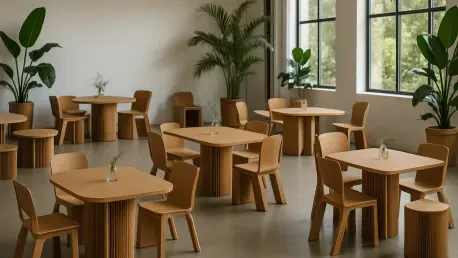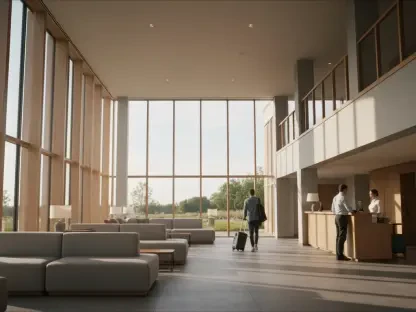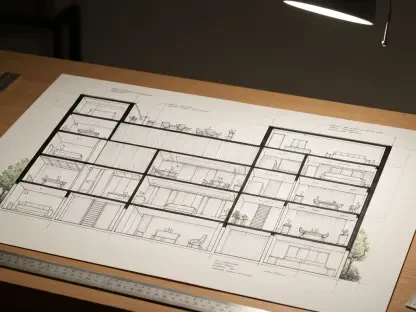I’m thrilled to sit down with Katarina Railko, a renowned expert in hospitality with a rich background in travel and tourism. Katarina has carved out a significant presence in the entertainment and events industry, particularly with her passion for expos and conferences. Today, we’re diving into the inspiring story of a sustainable chair replacement project at a leading eco-conscious venue in London, exploring how seemingly routine decisions can become powerful statements for environmental responsibility. Our conversation will touch on the motivations behind turning a simple procurement into a benchmark for sustainability, the importance of partnerships in achieving green goals, and the innovative features that make such initiatives both practical and impactful.
How did the idea of transforming a routine chair replacement into a sustainability statement come about for a venue like this?
I think it started with a deep-rooted commitment to environmental responsibility. For a venue already known for its green practices, replacing over 500 chairs wasn’t just about updating furniture—it was a chance to push boundaries in the events industry. The team saw an opportunity to demonstrate that even everyday decisions can have a profound impact if approached with intention. It was about setting an example, showing that sustainability isn’t a one-off effort but a continuous journey woven into every choice we make.
What does it mean to treat sustainability as a shared responsibility in the day-to-day operations of an events venue?
It means that everyone, from management to staff, owns a piece of the mission. It’s not just a policy on paper—it’s a mindset. Every decision, whether it’s sourcing new furniture or planning an event, is filtered through the lens of our eco-friendly values. For instance, with the chair replacement, we didn’t just look at cost or aesthetics; we asked how the purchase aligns with our long-term goals for reducing waste and carbon footprint. It’s about creating a culture where sustainability isn’t an afterthought but the foundation of how we operate.
Can you share what made partnering with a supplier focused on sustainable sourcing so critical for this project?
Absolutely. Working with a supplier who shares your vision is everything. Their expertise in sustainable sourcing brought a depth of knowledge we needed to make informed choices. They didn’t just provide products; they helped us ask the right questions about materials, production processes, and end-of-life options. Their alignment with our values ensured that the project wasn’t just about acquiring chairs but about building a partnership rooted in a shared commitment to the environment. That synergy made all the difference in achieving a meaningful outcome.
What are some of the deeper questions or challenges you faced while sourcing sustainable furniture for this initiative?
One of the toughest parts was balancing sustainability with practicality. We had to dig into how the chairs were made, what materials were used, and what would happen to them after their useful life. A big challenge was ensuring durability without compromising on environmental impact. For example, we needed chairs that could withstand heavy use in a busy conference setting while still meeting strict sustainability criteria. It required a lot of dialogue with our partners to find solutions that didn’t force us to sacrifice one for the other, ensuring both function and values were upheld.
Why was a chair with features like high recycled content and full recyclability the right choice for this venue?
It came down to aligning with our core principles. A chair made from 80% recycled steel and designed to be fully recyclable at the end of its life was a perfect fit because it minimizes waste from start to finish. Additionally, knowing it was manufactured using renewable energy from solar and wind farms added another layer of environmental benefit. These features weren’t just checkboxes—they represented a holistic approach to sustainability that matched our vision. It felt like a tangible way to contribute to a circular economy while providing comfort and functionality for our guests.
Can you explain the significance of a take-back guarantee and how it influenced the decision-making process for this project?
The take-back guarantee was a game-changer. It means that when the chairs reach the end of their life with us, they’re returned to the manufacturer for responsible disassembly, reuse, or material recovery—nothing goes to landfill. This was a deciding factor because it closes the loop on sustainability. It’s not just about buying a green product; it’s about being part of a system that ensures materials keep circulating. Knowing we could even track where our old chairs go next gave us confidence that we’re contributing to a bigger cycle of reuse and accountability.
How do practical benefits, like improved comfort or faster room setups, play into the overall success of a sustainable furniture upgrade?
They’re incredibly important. Sustainability can’t come at the expense of functionality—otherwise, it’s not sustainable in the practical sense. With these new chairs, we gained ergonomic comfort for delegates, safer linking technology for large events, and even faster room turnarounds, which boosts efficiency. These benefits show that good design and environmental responsibility can coexist. When you can deliver a better experience for clients while staying true to your green values, it’s a win-win that proves eco-friendly choices can enhance every aspect of operations.
What’s your forecast for the future of sustainability in the events industry based on projects like this one?
I’m optimistic. Projects like this chair replacement are setting a new standard, showing that sustainability can be embedded into even the smallest decisions. I believe we’ll see more venues and suppliers collaborating to create closed-loop systems and prioritize lifecycle thinking. The demand for transparency and accountability is growing, and technology will play a bigger role in tracking environmental impact. My hope is that within the next decade, initiatives like this won’t be the exception but the norm, with the events industry leading the way in driving real, measurable change for the planet.









